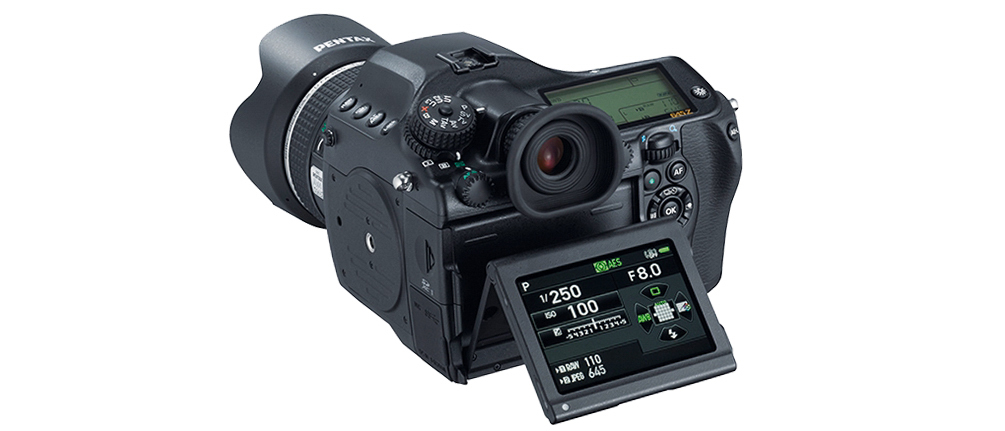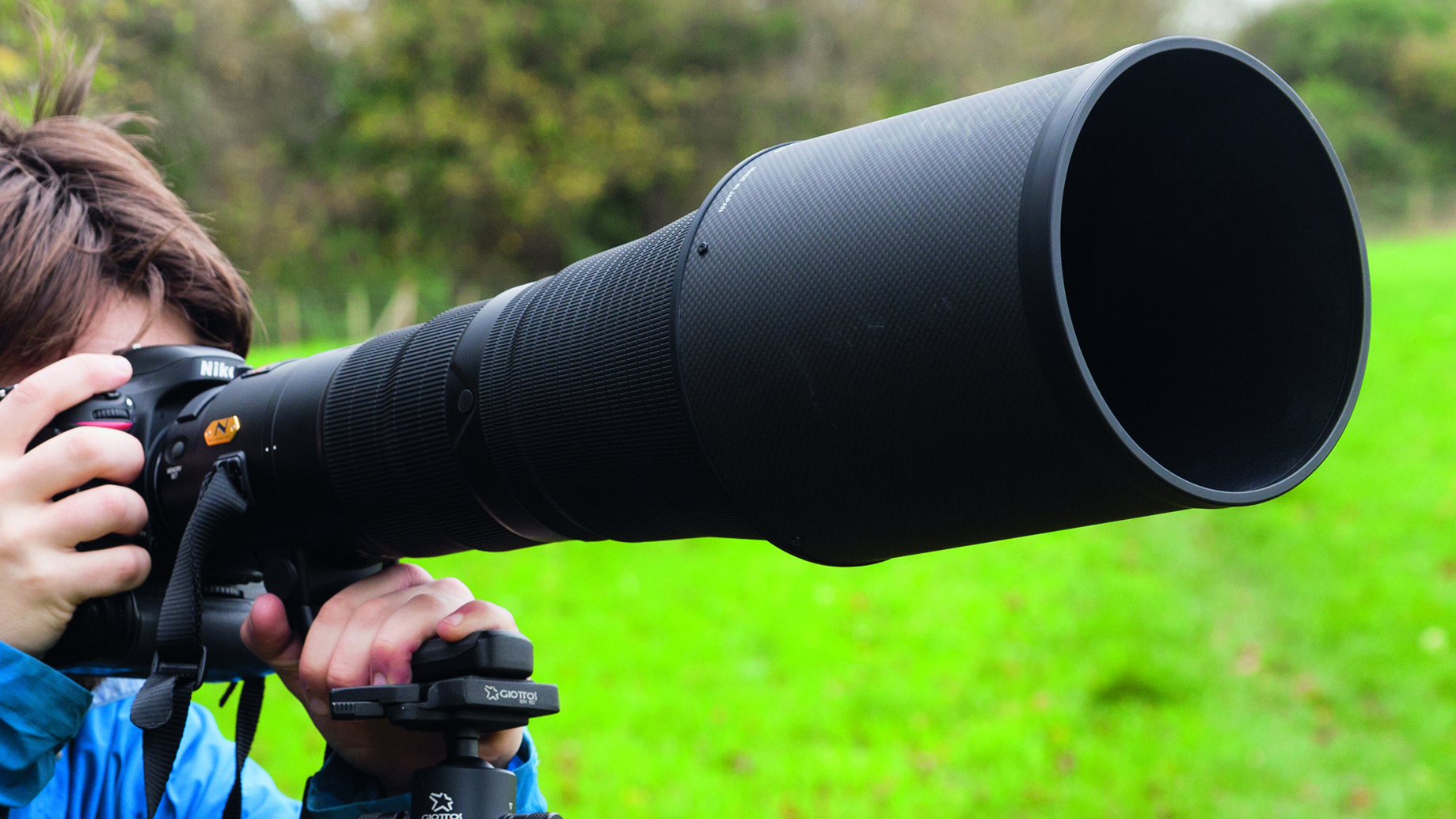Digital Camera World Verdict
The Pentax 645Z has not significantly cheaper to buy than when this medium-format DSLR was launched over eight years ago. But given that there are now mirrorless medium-format models available at a similar low price, you can't judge this veteran camera on cost alone. The 645Z is an extraordinarily well-built camera, with excellent ergonomics for its size – and is supported by a lens system that boasts 16 different optical options. But in terms of resolution, image stabilization, autofocus and more - it is hard to justify this camera over the Fujifilm GFX 50S II.
Pros
- +
Some great price reductions recently
- +
DSLR design
- +
51 megapixel sensor
Cons
- -
Lower resolution that competing mirrorless models
- -
No leaf shutter lenses (unlike some rival DSLR medium format systems
- -
No in-built image stabilization
Why you can trust Digital Camera World
The Pentax 645Z was launched in 2014 - and back then it was noted for being the most affordable digital medium format camera you could buy. At launch its price was around $9,700 / £7,700 for a camera body and a 55mm lens – significantly lower than alternative options from Hasselblad, Phase One and Leica.
But a lot has changed in the intervening eight years, thanks in particular due to the launch of the Fujifilm GFX system - which now offers 50-megapixel and 100-megapixel models that can compete with the prices of full-frame cameras with much smaller sensors.
The Pentax 645Z has dropped in price significantly recently, to allow it to compete with the Fujifilm GFX 50S II - which, like the Pentax, offers a 50 megapixel sensor. But there is one fundamental difference between these two cameras. The Fujifilm is a mirrorless model, whilst the Pentax uses a traditional DSLR design.
There are lots of disadvantages of the reflex design - the camera is bigger (around 50% heavier than the GFX 50S), for starters, and it has a huge mirror that ricochets like a rifle every time you take a shot.
But there are advantages too - as you don't have to look at a miniature LCD screen to see the subject - you look through the lens itself via a pentaprism. For some photographers, this is a big plus point. And the bigger size and noisy mirror, may be of little significance if your style of photography always means using a tripod (the Pentax, unlike the Fujifilm, is a camera you'd try to avoid using handheld).
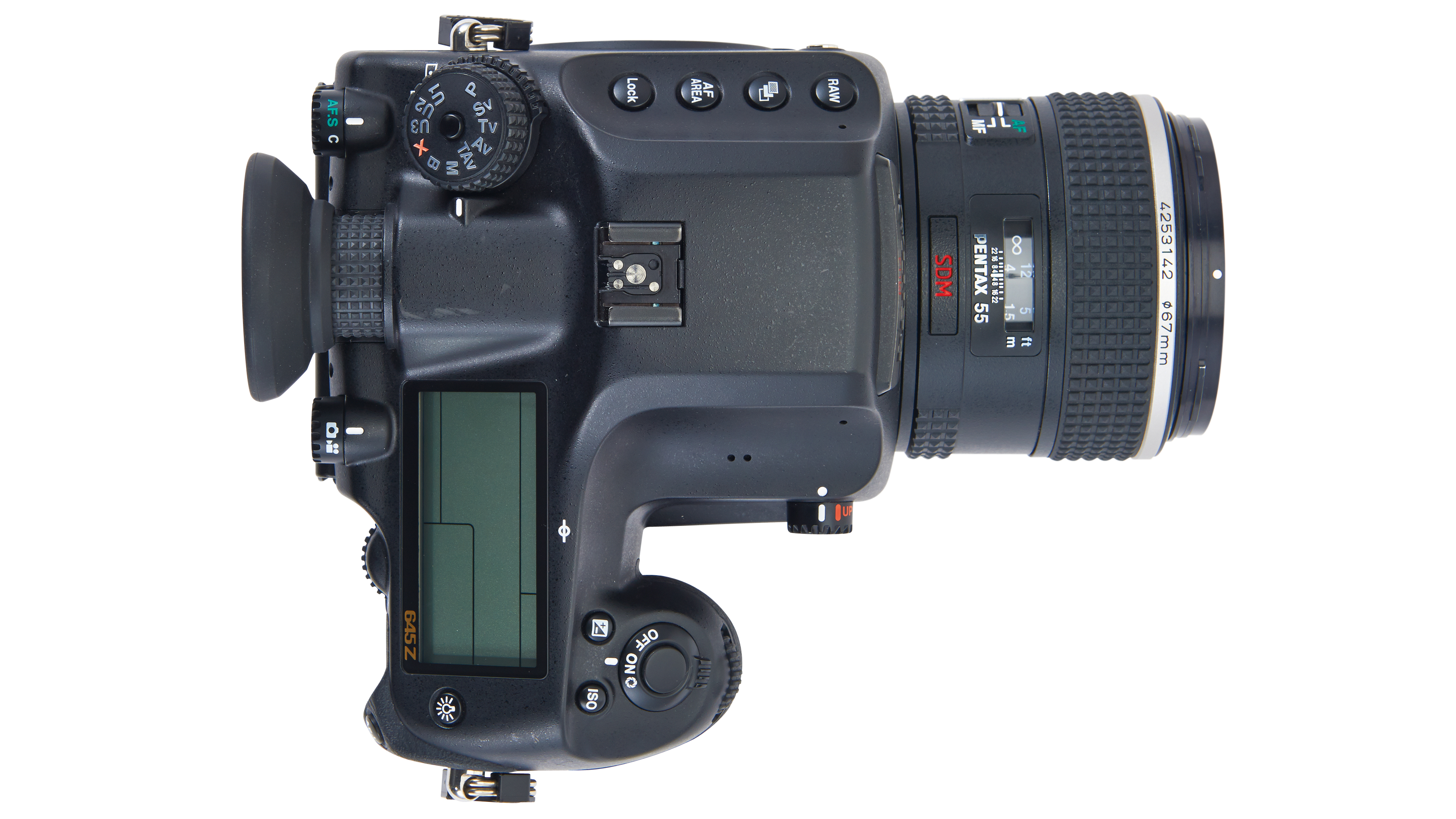
Image sensor: 51.4MP CMOS, 44 x 33mm
Lens mount: Pentax 645AF2
Crop factor: 0.79x
Viewfinder: Prism 98% coverage
ISO range: ISO 100–204,800
Autofocus: 27-point (25 cross-type)
Shutter speed: 1/4,000 to 30 sec, Bulb
Leaf shutter option: No
Max burst: 3fps
LCD screen: 3.2-inch, 1,037k, tilt
Flash sync speed: 1/125s
Stills quality modes: Raw, TIFF, JPEG
Video resolution: 1080p
Memory cards: 2 x SD/HC/XC
Dimensions (W x H x D): 156 x 117 mm x 123 mm
Weight: 1550g (with memory card and battery)
Features
Like the Pentax 645D that it replaced, the 645Z has a sensor that measures 43.8 x 32.8mm (168% the size of a 35mm frame). Sony makes the sensor (rather than Kodak), and the pixel count was boosted from 40 million to 51 million. The anti-aliasing filter is also omitted to boost detail resolution.
Pentax has coupled the sensor with its Prime III image engine, first seen in the Pentax K-3 APS-C-format SLR. This enables up to 10 raw images (or 30 large highest-quality JPEGs) to be shot at up to three frames per second. In addition, the maximum sensitivity setting is ISO 204,800, significantly higher than the ISO 6,400 maximum offered by other medium-format cameras.
There’s also a tilting 3.2-inch 1,037k-dot LCD, which is capable of showing a Live View image, and Full HD movies may be recorded. Pentax has also given the 645Z the Safox 11 phase-detection autofocus (AF) system found in the K-3. This has 27 AF points, 25 of which are the more sensitive cross-type.
Build and handling
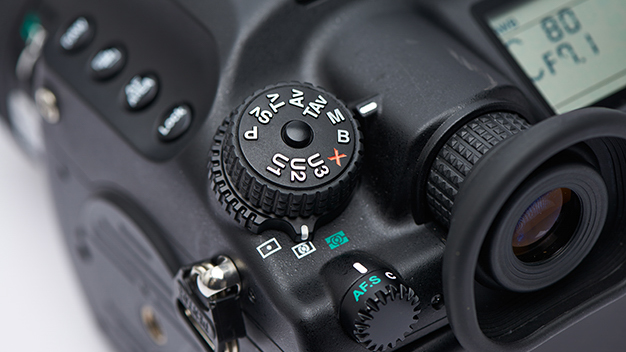
Pentax has used the same design and control layout for the 645Z as it did for the 645D. The body is covered liberally with controls that give a quick route to key features such as sensitivity, white balance, and exposure compensation. However, there’s only fairly limited scope to customize the use of these buttons.
The new camera has the same deep grip and, despite its large size and relatively heavy weight, it feels comfortable in the hand.
Considering the mass of control buttons, it’s remarkable that Pentax has found room for an additional portrait-orientation tripod mount on one side of the camera, as well as a huge top-panel info LCD. Features are plentiful as well. Live View is fully supported.
As the user interface is fairly similar to that of Pentax’s K-series cameras, it’s easy to get to grips with the 645Z. Even those who have never used a medium-format camera before will soon feel comfortable using it. That said, the menu looks dated.
As an SLR, the 645Z has a reflex mirror that lifts to allow an exposure to be made. Naturally this is quite a large unit and, while it’s not quite the door-slam of some medium-format DSLR models, you are certainly aware of its movements.
The LCD screen is clear and provides a detailed view, whether you’re composing using Live View mode or reviewing images. The fact that the screen tilts is especially useful when composing images on a tripod in the studio or when out shooting landscapes. It’s also helpful that the screen’s display can be set to rotate, to make it easier to read when you’re shooting in upright format.
Performance
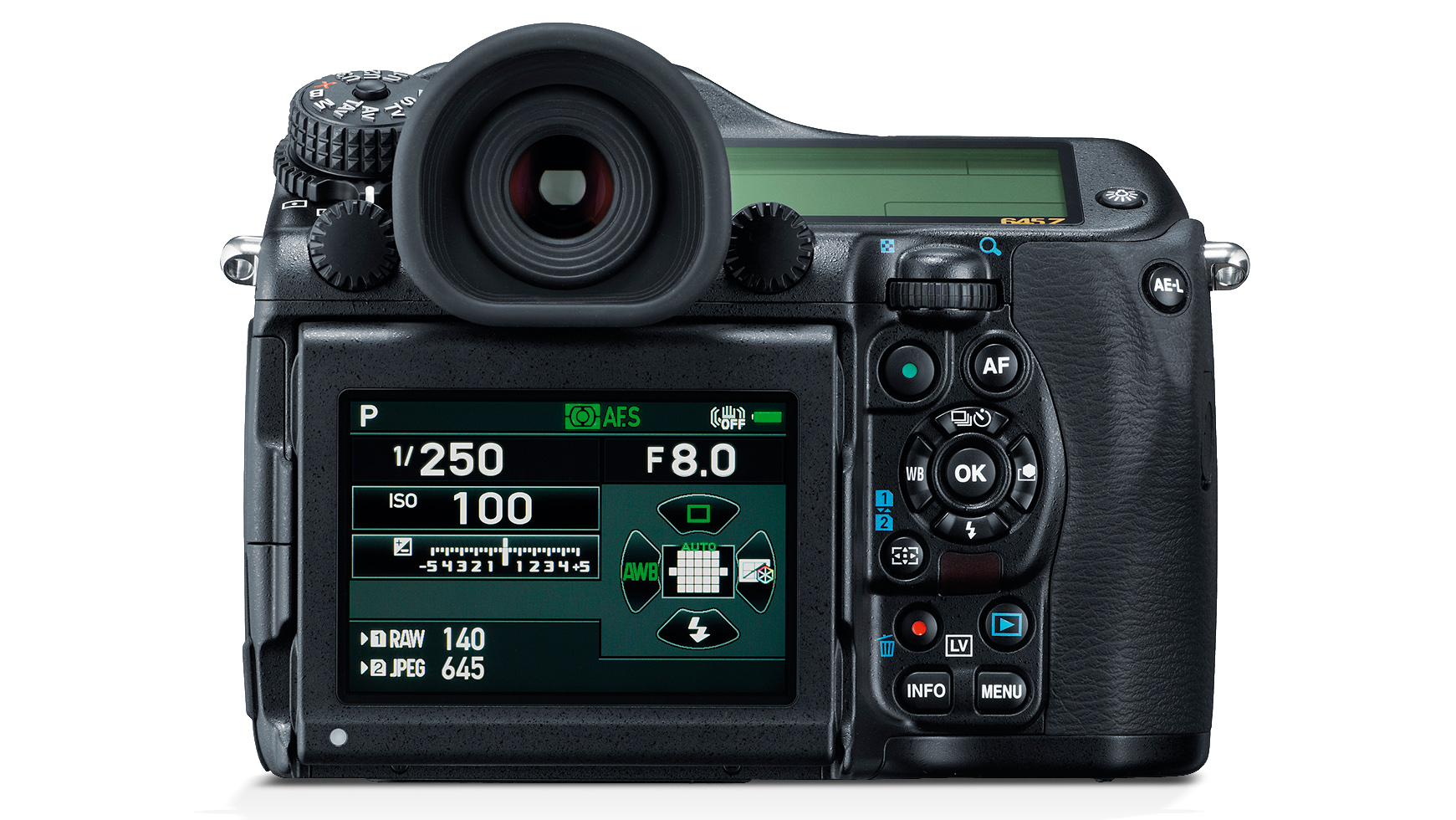
The key advantage of having 51 million effective pixels on a medium-format sensor is that it’s possible to record lots of detail. Also, because those pixels are relatively large, they generate a strong signal, which means noise levels can be kept down.
This is immediately apparent in the images from the 645Z – they have a huge amount of sharp detail and little noise at the low to mid-range sensitivity settings. Even at the highest sensitivity setting of ISO 204,800, noise is controlled comparatively well. There is some colored speckling visible, but detail appears to be better retained than in images from small-format SLRs with such settings. Stepping down to ISO 6,400 results in images that look significantly better, with plenty of detail, so using this setting is perfectly realistic.
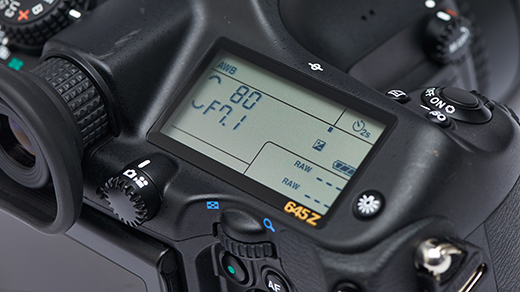
As we have found with other Pentax SLRs, the 645Z’s Multi-segment metering system generally behaves well, but it is prone to underexposing when faced with bright subjects or when there are large bright areas in the scene.
The automatic white balance system also does a good job in a range of natural lighting conditions but, as is often the case, a custom white balance setting is a better bet in artificial light. In the Natural Custom Image setting, the 645Z generally delivers pleasant-looking images with natural colors.
While the 645Z’s AF system can’t compete with a high-end small-format SLR’s, it is pretty impressive considering the size and weight of the elements inside the compatible lenses. Even in quite low light, it homed in on its target decisively with little hunting, although it starts to struggle when subjects get close to the minimum distance.
Pentax 645Z: Sample images


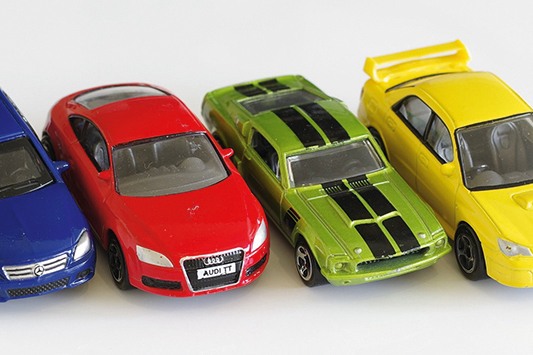
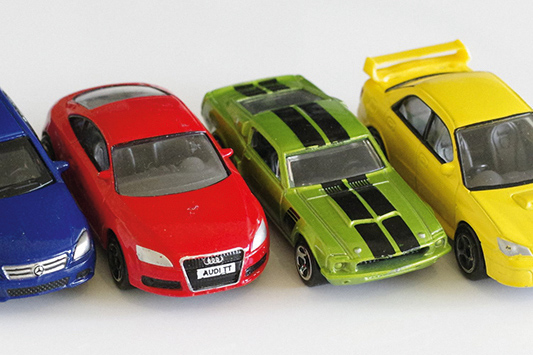
Pentax 645Z: Lab results
For our lab data comparison, we compared the Pentax 645Z to to of its closest medium-format rivals: the Fujifilm GFX 50S II and Hasselblad X1D II 50C. But these days you don't need a medium format sensor to get around 50MP of resolving power. There are now several of 45+ megapixel full-frame mirrorless cameras to chose from, but since the 645Z is a DSLR, we've included the venerable Nikon D850 for comparison.
We test resolution using Imatest charts and software, and dynamic range and signal to noise ratio with DxO Analyzer.
Resolution (line widths/picture height):
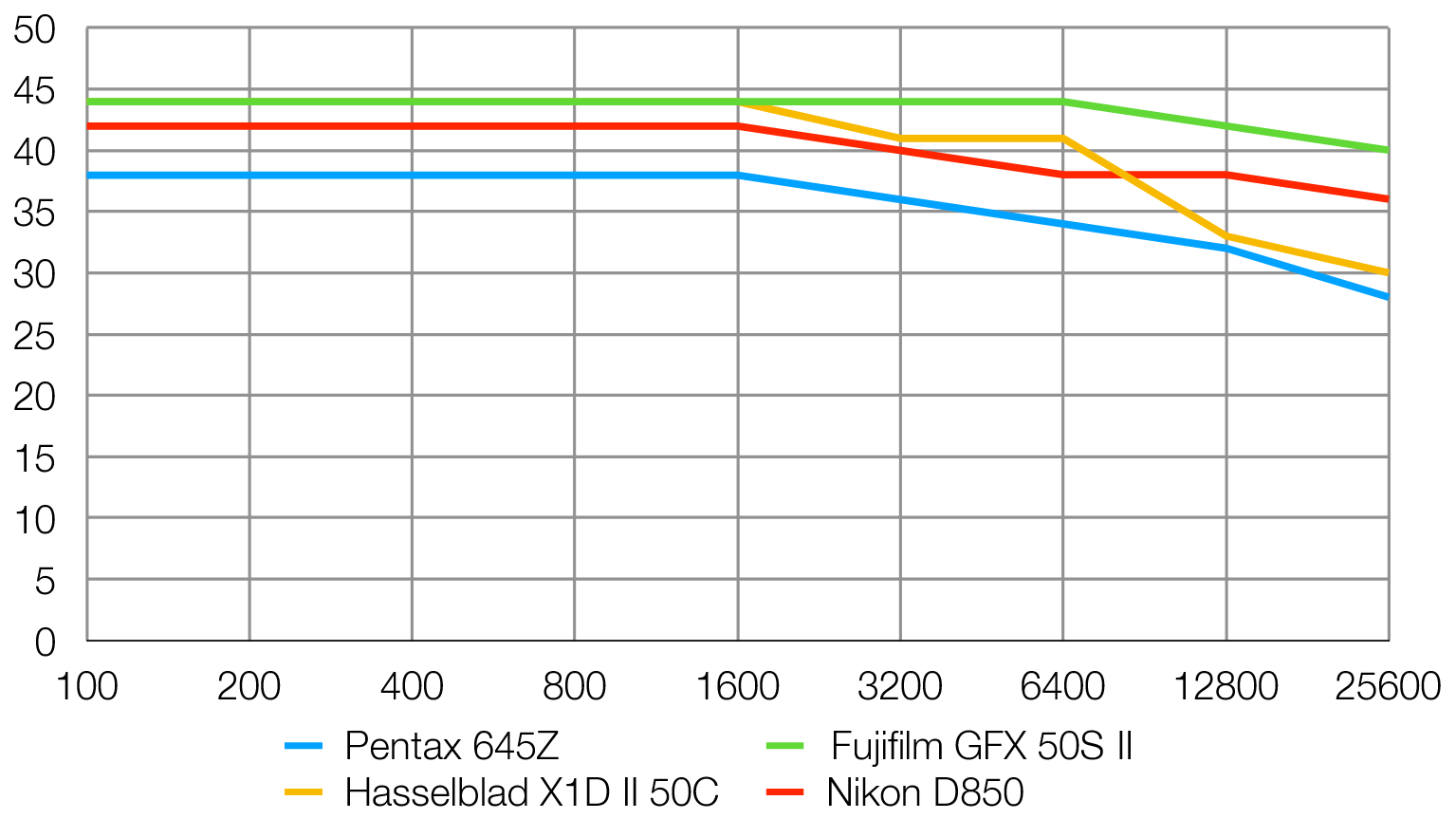
The 645Z is a relatively old camera now, pre-dating even the aging D850 by three years. Consequently it can't quite match the more modern competition for ultimate resolving power, with both the Hasselblad and Fujifilm cameras capturing noticeably more fine detail throughout the tested sensitivity range.
Dynamic range (EV):
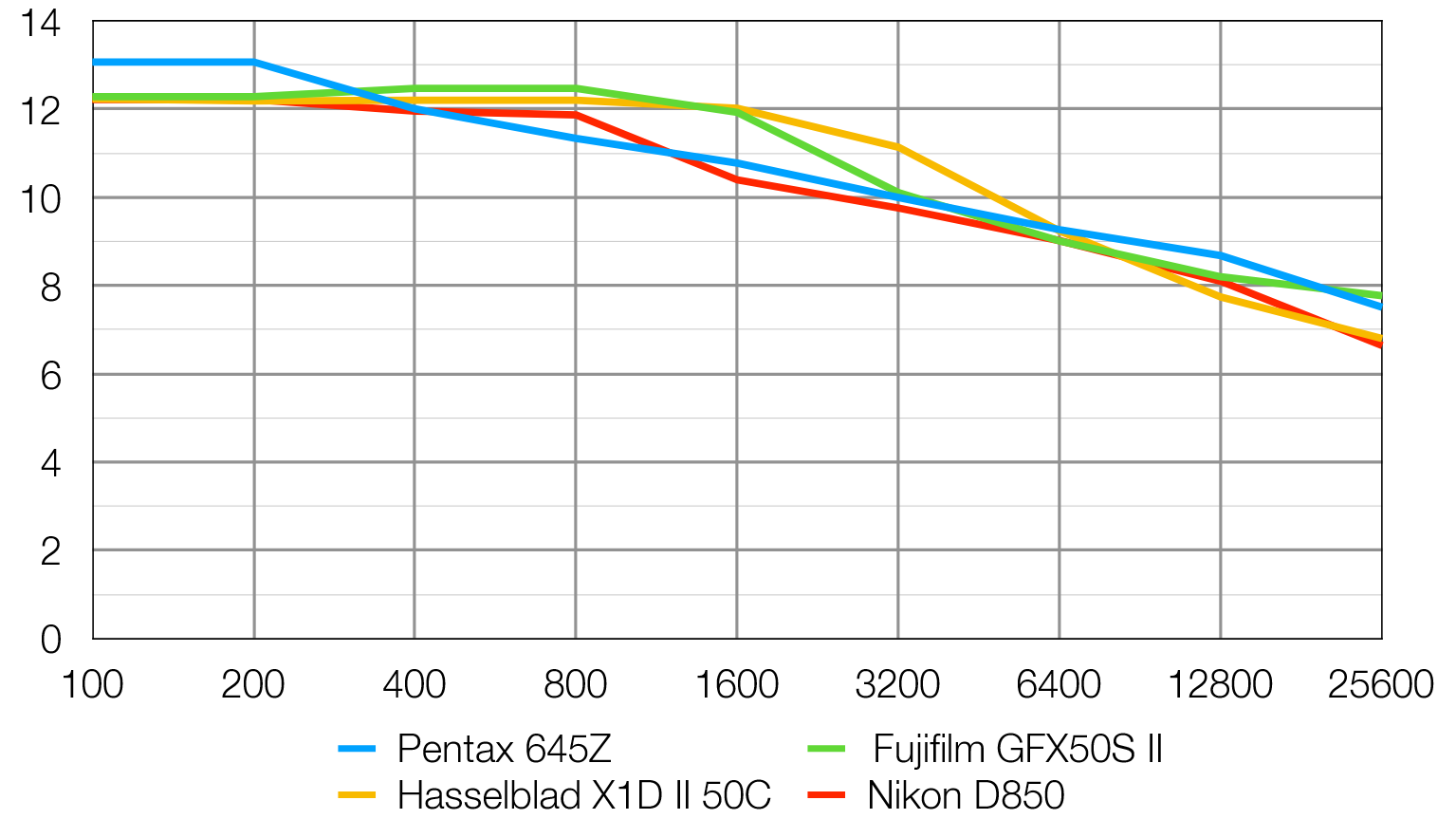
The Pentax starts off well, capturing excellent dynamic range at low ISOs. As the sensitivity ramps up, the 645Z falls slightly behind the Fujifilm and Hasselblad cameras, but the Pentax manages a class-leading performance at ISO 6400 and above.
Signal to noise ratio (decibels):
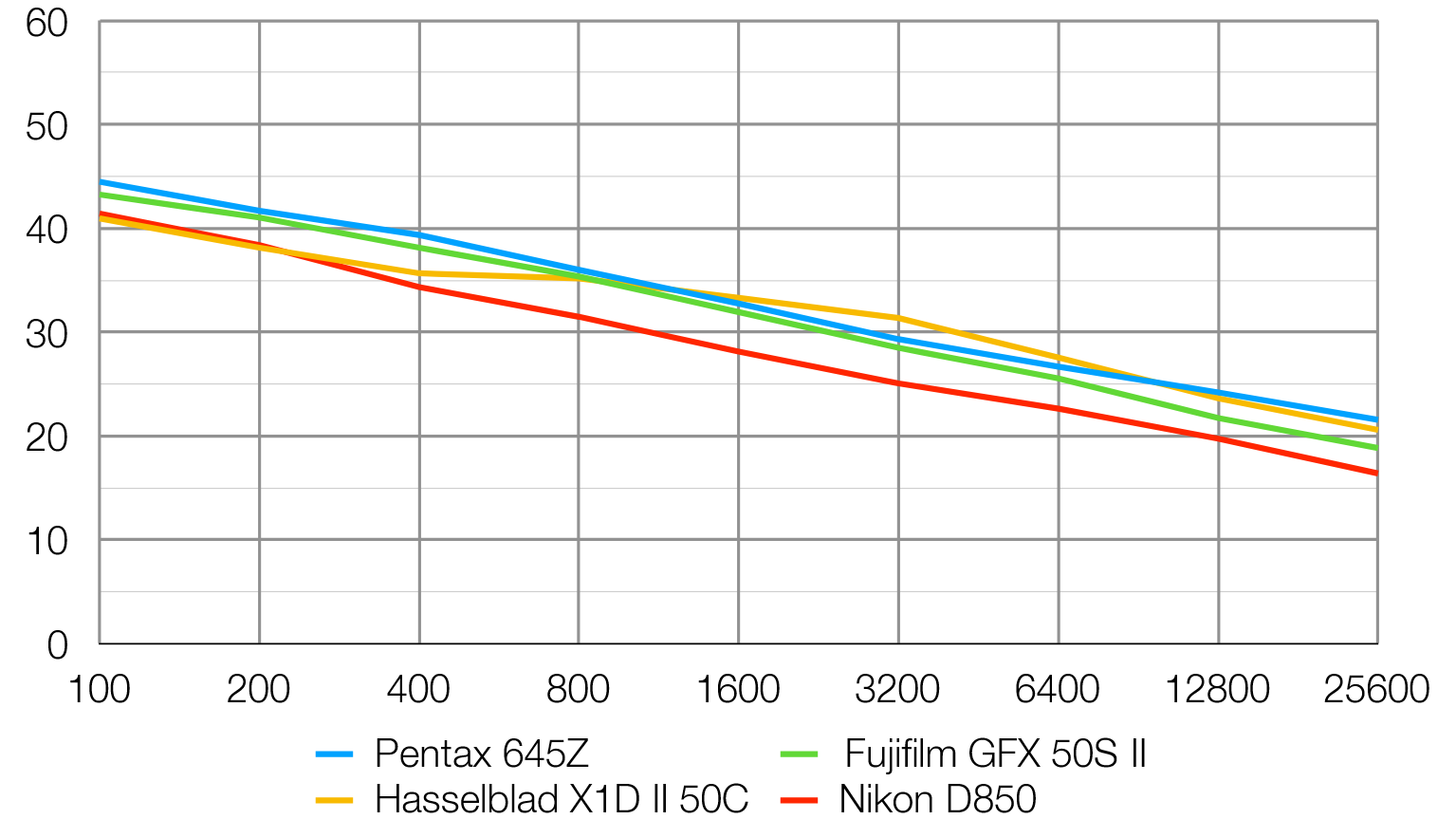
This test compares the amount of random noise generated by the camera at different ISO settings as a proportion of the actual image information (the 'signal'). Higher values are better and we expect to see the signal to ratio fall as the ISO is increased.
All three medium-format cameras are very closely matched when it comes to image clarity. Interestingly, despite having a lower pixel count than the other cameras, the D850's images are slightly noisier throughout the sensitivity range. This is to be expected though, as its smaller sensor packs in smaller individual photosites ('pixels'), which can in turn make them less light sensitive and more prone to generating image noise.
Pentax 645Z: Verdict
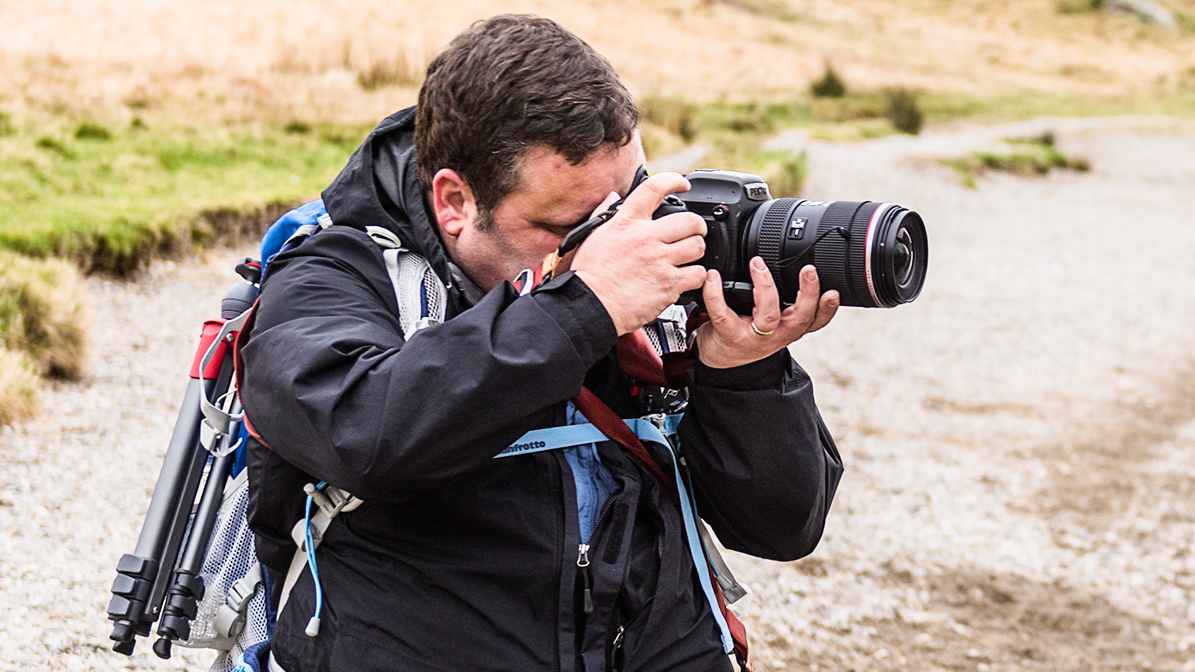
The Pentax 645Z is a solidly built camera, and weatherproofed, yet it’s pleasant to use hand-held. It’s not far off being a ‘point and shoot’ medium-format camera if you want it to behave in such a way – although the thud of the mirror means that this is best used on a tripod
The main aim of using a medium-format camera is to produce higher-quality images than is possible with a small-format camera, and the Pentax 645Z certainly delivers in this respect. Images have a good detail, and colors are generally natural yet vibrant straight from the camera. Depth of field can also be very limited, which is a potential shortcoming for landscape and macro photography.
Despite its age, it still gives a reasonable account of itself in our lab tests - it doesn't have the resolving power of its 50-megapixel Fujifilm and Hasselblad rivals, but it does offer advantages in terms of dynamic range.
The Pentax 645Z lens range currently includes 16 lenses (see full list) - two more than currently on offer in the Fujifilm GF range.
Ultimately, the attraction of the Pentax will depend of the price. Recently (in late 2022) we have seen some amazing offers on this camera. But, unfortunately for the 645Z, the pricetag of the Fujifilm GFX 50S has also be reduced – and this more modern camera has to be the best option of the two for most would-be medium format users.
Read more:
Best medium format cameras
Best Pentax cameras
Chris George has worked on Digital Camera World since its launch in 2017. He has been writing about photography, mobile phones, video making and technology for over 30 years – and has edited numerous magazines including PhotoPlus, N-Photo, Digital Camera, Video Camera, and Professional Photography.
His first serious camera was the iconic Olympus OM10, with which he won the title of Young Photographer of the Year - long before the advent of autofocus and memory cards. Today he uses a Nikon D800, a Fujifilm X-T1, a Sony A7, and his iPhone 15 Pro Max.
He has written about technology for countless publications and websites including The Sunday Times Magazine, The Daily Telegraph, Dorling Kindersley, What Cellphone, T3 and Techradar.
